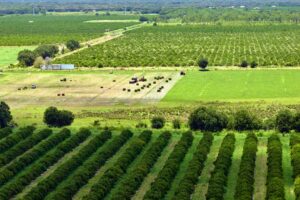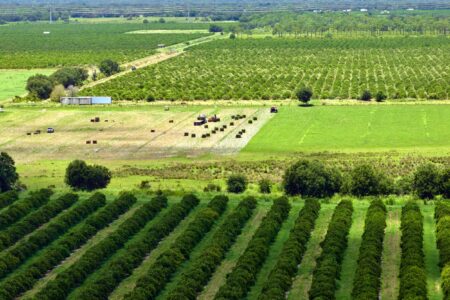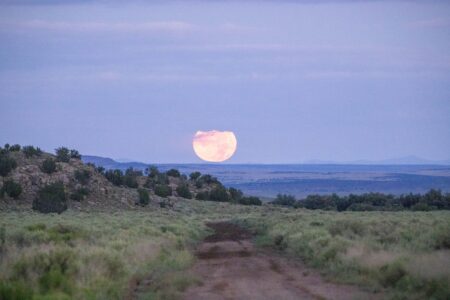The corn and soybean planting season is wrapping up across many of the top-growing states, according to USDA’s first June Crop Progress report.
Find out what agronomists in Iowa, Illinois, Nebraska, Minnesota, Indiana, and Wisconsin have to say about how crops in their territories are progressing.
Iowa
Corn
“Planting is nearly complete across the state and most of the corn and soybeans have emerged. Many farmers are now turning their attention to applying crop protection products and baling hay,” said Iowa Secretary of Agriculture Mike Naig following the release of the Crop Progress report. “While haze from Canadian wildfires has hung around the last few days, it’s expected to clear by mid-week. The forecast shows much of the state could receive some welcome rain in the week ahead.”
Reflecting on the week ended June 1, Syngenta Agronomist Logan Dinkla said, “The majority of corn fields look really good.” USDA rated Iowa corn condition 2% poor, 14% fair, 61% good, and 23% excellent. There was no corn rated very poor in the state.
Weather
Dinkla noted, “Growth has been slowed with cooler than normal temperatures.” Iowa State Climatologist Justin Glisan reported the statewide average temperature was 62.2 degrees, more than 2 degrees below normal.
Dry weather with isolated showers led to 5.4 days suitable for fieldwork during the week ended June 1, according to the USDA, National Agricultural Statistics Service. Rainfall totals were generally light across the state with scarce amounts in south-central and eastern Iowa, noted Glisan.
Soybeans
Precipitation in Dinkla’s territory in mid to late May helped accelerate soybean emergence, he said. “The majority of what I have seen looks good,” he said. “There are fields where soybeans were not planted into moisture leading to uneven emergence.”
USDA rated Iowa soybean condition 1% very poor, 2% poor, 16% fair, 63% good, and 18% excellent.
Illinois
Corn
With 93% in the ground, corn planting is almost complete in Illinois. USDA said 80% of the crop had emerged by the week ended June 1.
Syngenta Agronomist Phil Krieg works in southern Illinois. He noted “considerable progress” planting corn was made between May 25 and 31. On June 1, he estimated the crop 75% planted across his territory. Corn emergence had just begun in the area, he said.
On June 2 Ryan Gentle, Wyffels agronomy manager covering much of western Illinois, said “Most early corn in my coverage area has been sidedressed and post sprayed, and is close to closing the rows.” He added, “It looks very good right now.”
USDA rated Illinois corn condition 2% very poor, 5% poor, 30% fair, 51% good, and 12% excellent in the latest Crop Progress report.
Soybeans
Although USDA said statewide Illinois soybean planting progress was slightly ahead of the five-year average, Kreig noted it is “only complete in the northern part of Southern Illinois around the Taylorville area.” He estimated just 40% of soybeans in his territory had been planted as of June 1.
Kreig added, “Emergence looks good on the earlier plantings up north with some in the second trifoliate stage. Everywhere else they are just beginning to emerge, so stands are yet to be seen.”
Gentle noted in western Illinois, “Early beans are at the point of needing post sprayed. They have seemed to grow slow so far this spring.”
When it comes to condition, Gentle said most soybean fields he has observed are good to average with one exception. “The very first planted fields look very good,” he said.
USDA rated Illinois soybean condition 2% very poor, 5% poor, 34% fair, 48% good, and 11% excellent in the latest Crop Progress report.
Nebraska
Corn
Corn planting is complete for many Nebraska farmers, according to the latest Crop Progress Report. Syngenta Agronomist Travis Gustafson said, “Planters have been parked for a while and the crop is off to a great start.”
USDA reported 90% of Nebraska corn has emerged by the week ended June 1. Gustafson said, “Most corn in Nebraska is around the V5 growth stage so a lot of growers have initiated their post emerge herbicide passes.”
He noted, “Due to the cooler temperatures, corn is shorter than it should be for its growth stage.” Gustafson is optimistic the corn height will catch up as temperatures rise and more GDUs are accumulated.
USDA rated Nebraska corn condition 1% very poor, 3% poor, 28% fair, 54% good, and 14% excellent in the latest Crop Progress report.
Soybeans
“Soybean planting is basically done in Nebraska,” Gustafson said, confirming USDA’s report of 95% complete.
He added emergence conditions have been great and the crop is generally in good condition, mirroring USDA’s ratings of 1% very poor, 2% poor, 30% fair, 55% good, and 12% excellent.
Weather
“Similar to corn, soybeans in Nebraska need more heat to promote good growth. Much of Nebraska will see a return to warmer temperatures as we move into June,” Gustafson said.
He added, “Soil moisture has been adequate with all the rains received over the last half of May.” USDA rated topsoil moisture across the state 15% very short, 34% short, 49% adequate, and 2% surplus in its latest report.
U.S. Drought Monitor
Drought maps published June 5 indicate more than 1% of the state faced D3 extreme drought, almost 34% of Nebraska reported D2 severe drought, and D1 moderate drought spanned more than 50% of the state. Over 14% of Nebraska reported abnormally dry conditions.
Minnesota
Corn
Corn planting is virtually complete in Minnesota as well. USDA said 87% of the crop had emerged.
“Most corn is in the V3-V5 stage,” said Wyffels agronomist Jared Goplen on June 2. Part of his territory covers southern Minnesota.
Goplen says wind and cool weather over the last several weeks tattered up the corn and kept it from growing much until the very end of May. Most corn had been sprayed and farmers were beginning to side-dress as well, he said.
Soybeans
Statewide, USDA reported 73% of soybeans have emerged. This is 14 percentage points ahead of the five-year average.
“Soybeans are all emerged aside from some fields that need replanting,” said Goplen of his area. While it was not widespread, some fields need replanting due to emergence issues or wind/sandblasting damage, he said.
Weather
Goplen noted Canadian wildfire smoke has somewhat blocked sunshine at the beginning of June.
“Soil moisture is nearly ideal for my coverage area,” said Goplen. USDA reported Minnesota topsoil moisture was rated 2% very short, 17% short, 77% adequate, and 4% surplus.
Indiana
Corn
Farmers have planted 86% of this year’s Indiana corn crop, USDA reported.
Syngenta Agronomist Chad Threewits covers Indiana. “Activities on corn in my area cover the full spectrum,” he said. “There are growers still wrapping up planting and replanting in the south,” he said. “Many others are post spraying and side dressing early planted corn.”
Threewits noted crop condition also varies widely across the state. “Some of the earliest planted corn has thin stands and the last planted corn really needs some warm sunny weather,” he said. Crops in northern Indiana look very good, he added.
USDA rated corn condition in the state 2% very poor, 4% poor, 25% fair, 60% good, and 9% excellent.
Soybeans
Threewits said variability can be seen across the state’s soybean crop, too. Planting is still underway in the south, he said.
Cool weather has slowed crop progress. “I nkow of many fields that were planted over two weeks ago that still aren’t fully emerged,” Threewits said Monday.
USDA rated Indiana soybean condition 2% very poor, 4% poor, 25% fair, 60% good, and 9% excellent.
Wisconsin
Corn
USDA reported corn emergence reached 70% in Wisconsin the week ended June 1.
Syngenta Agronomist Nick Groth covers Wisconsin. He reported, “Wet and cool weather over the last couple weeks had left the emerging corn in a bit of an ugly duckling state, with fields noticeably yellow and a bit uneven.” More recently, the return of sun and heat has improved the looks of the crop, he added.
USDA rated Wisconsin corn 1% very poor, 4% poor, 25% fair, 60% good, and 10% excellent.
Soybeans
Groth said, “Soybean emergence is around 50% across the state of Wisconsin with nearly all fields emerged in southern Wisconsin.” He added crop conditions are generally good.
USDA rated Wisconsin soybeans 1% very poor, 3% poor, 16% fair, 64% good, and 16% excellent.


:max_bytes(150000):strip_icc()/Lee-Lubbers-Wheat-August-2024-South-DakotaIMG_7952-79244c166fac424baa84dccc18be6e32.jpeg)

:max_bytes(150000):strip_icc()/fish-habitat-and-jetty-construction-2048x1536-3f12a1341a894afdb0a343e5db33b641.jpg)


:max_bytes(150000):strip_icc()/100127260_corn-e8272ff9d244400fa206d8c6a1d1457b.jpg)



:max_bytes(150000):strip_icc()/101485674_corn-5d814390db764fcdaa3d3c1e82604454.jpg)